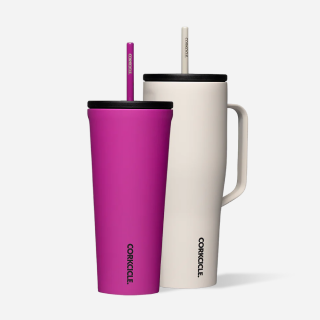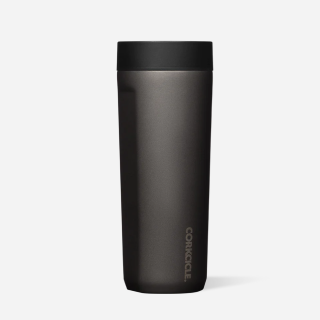In today's dynamic workplace environment, fostering a culture of wellness is more than a trend —it's a necessity for companies aiming to boost employee health, productivity, and morale. The significance of workplace wellness can't be overstated, with benefits ranging from reduced stress and absenteeism to increased employee retention, engagement, and satisfaction.
Recognizing the integral role that well-being plays in the success of both individuals and the organization, leadership must invest in comprehensive strategies that support and enhance the health of their teams. This commitment to fostering a supportive and health-conscious environment not only contributes to the immediate well-being of employees but also sets the foundation for sustained organizational growth and competitiveness.
This comprehensive guide outlines innovative wellness ideas catering to employees' holistic well-being, emphasizing practical steps organizations can take to cultivate a healthier, more vibrant workplace.
Enhancing Employee Health and Wellness
In the pursuit of operational excellence, the health and wellness of employees often emerge as a pivotal factor influencing a company's success. A well-rounded wellness program addresses not just the physical health but also the mental and emotional well-being of the workforce. Strategies such as providing ergonomic work solutions, encouraging regular physical activity with sport canteens to keep hydrated, and ensuring employees have access to mental health resources are foundational to enhancing overall employee health and wellness.
Adopting a proactive stance on wellness can significantly reduce healthcare costs for employers while simultaneously boosting the efficiency and productivity of the team. It's about creating an environment where employees feel valued and cared for, leading to increased loyalty and a stronger, more cohesive team.
The Importance of Fostering a Healthy Workplace
The correlation between a healthy workplace and employee productivity is undeniable. Studies consistently show that employees perform better when they feel physically and mentally well. Fostering a healthy workplace goes beyond offering health benefits; it involves creating a supportive culture that prioritizes employee wellbeing at every level of the organization. Adding reusable water bottles to the workplace is a simple yet effective way to encourage hydration, contributing to a healthy, stress-reduced environment.
A healthy workplace culture reduces stress, mitigates the risk of burnout, and promotes a sense of belonging and community among employees. It's about recognizing that employees are the most valuable asset and that their well-being directly impacts the company's bottom line.
Comprehensive Workplace Wellness Ideas
Implementing Flexible Work Schedules
Flexibility is a cornerstone of modern workplace wellness. Allowing employees to adjust their work hours or work from home can lead to a better work-life balance, reducing stress and increasing job satisfaction. Multipurpose travel coffee tumblers serve as perfect companions for those with flexible schedules, ensuring their favorite drinks maintain the perfect temperature no matter where the day takes them. This flexibility acknowledges the diverse needs and responsibilities outside of work, catering to a happier, more focused, and productive workforce.
Creating a Culture of Movement and Physical Activity
Sedentary lifestyles are a common consequence of modern work environments. Encouraging movement throughout the day can significantly improve physical health and mental focus. Initiatives like standing desks, walking meetings, and company-sponsored sports teams or fitness challenges can invigorate the workplace with healthy habits that help improve energy and vitality.

Encouraging Mental Health Days and Breaks
Mental health is equally as important as physical health, yet it's often overlooked in the workplace. Encouraging employees to take mental health days without stigma and promoting regular breaks throughout the workday can help manage stress levels and prevent burnout. Providing resources for mental health support and creating a culture of openness and support are essential steps toward a healthier workforce.
Offering Healthy Snacks and Hydration Stations
Nutrition plays a crucial role in overall health and wellness. By replacing sugary snacks and drinks with healthier options and ensuring easy access to hydration stations, companies can significantly impact their employees' health. Incorporating water bottles with company branding can add a unique touch, either as a token of appreciation for existing personnel or as welcome gifts for new employees, as it encourages hydration and a sense of unity within the team.
Promoting Ergonomic Workspaces
The physical environment where employees work can have a substantial impact on their health and productivity. Ergonomic workspaces designed to reduce strain and discomfort can prevent common workplace injuries associated with poor posture and repetitive motion. Investing in ergonomic chairs, adjustable desks, and keyboard trays demonstrates a commitment to employee health, leading to a more comfortable, productive work environment.
By implementing these comprehensive employee wellness ideas, companies can create a supportive and healthy workplace that not only enhances employee health and wellness but also contributes to a more productive organization. As the corporate world continues to evolve, the emphasis on employee wellness becomes increasingly integral to achieving long-term success and sustainability.
Wellness Programs That Make a Difference
Building on the foundation of fostering a healthy workplace, the next step involves introducing targeted employee wellness programs that resonate with and directly benefit the employees. By implementing corporate wellness programs that focus on physical fitness, mental health support, and preventive care, organizations can significantly enhance their workforce's overall well-being. Ultimately, integrating these wellness initiatives into every aspect of work life ensures a comprehensive approach to employee wellness, fostering a culture of health that supports both individual and organizational growth.
On-site Fitness Classes and Wellness Workshops
Offering on-site fitness classes can dramatically increase the accessibility of physical exercise for employees, encouraging them to incorporate regular physical activity into their routines. Similarly, wellness workshops that cover topics ranging from nutrition and stress management to sleep hygiene and financial wellness can equip employees with the tools they need to lead healthier lives. These initiatives not only improve physical health but also enhance mental well-being, creating a more vibrant and energetic workplace.
Mental Health Support and Resources
Given the increasing recognition of mental health's importance, providing robust mental health support and resources is vital. Establishing an environment where employees feel comfortable seeking help without judgment is crucial. Access to counseling services, mental health days, and resources like mindfulness apps or workshops on coping mechanisms can make a substantial difference in employees' overall well-being.
Regular Health Screenings and Wellness Challenges
Health screenings can play a critical role in preventive health care, enabling employees to catch potential health issues early. Coupled with wellness challenges that promote healthy competition and camaraderie, such as step count competitions or healthy eating challenges, they can significantly contribute to a culture of health and wellness within the organization.

The Role of Hydration in Workplace Wellness
Benefits of Regular Hydration for Employees
Hydration is fundamental to maintaining optimal health. Adequate water intake can improve cognitive function, enhance physical performance, and prevent dehydration-related ailments. For employees, staying hydrated can lead to better concentration, reduced fatigue, and overall better physical health, contributing to higher productivity and satisfaction at work.
How to Encourage Drinking More Water at Work
Making water readily available and appealing is key to encouraging regular hydration. Installing water stations throughout the workplace, providing insulated tumblers with company branding, and even initiating hydration challenges are effective ways to promote water intake. Branded tumblers, in particular, can serve as a constant reminder and motivation for employees to stay hydrated, while also reinforcing a sense of belonging to the organization.
Integrating Wellness into Every Aspect of Work-Life
Building a Supportive Community for Wellness
Creating a supportive community for wellness involves more than just launching programs; it's about fostering an environment where employees feel encouraged and motivated to take charge of their health. This can be achieved through regular wellness communications, creating spaces for employees to share their wellness journeys, and establishing wellness committees to ensure programs are meeting the workforce's needs.
Recognizing and Rewarding Healthy Behaviors
Recognition and rewards can be powerful motivators for maintaining healthy behaviors. Implementing a rewards system for participation in wellness programs or achieving health milestones can encourage ongoing engagement. Rewards can range from simple acknowledgments in company communications to office team-building activities, as well as tangible incentives like gift cards or additional time off.
Committing to Employee Wellness as a Long-term Investment
The journey towards fostering a culture of wellness requires commitment and ongoing effort. By implementing comprehensive wellness programs that address the physical, mental, and emotional health of employees, organizations can create a supportive and healthy workplace. The benefits of such a culture are manifold, including increased employee satisfaction, higher productivity, and reduced healthcare costs.
Moreover, investing in personalized elements, such as offering colorful tumbler bottles for hydration, can add a unique touch that further enhances employee engagement and loyalty. It's these thoughtful considerations that underscore a company's commitment to its employees' well-being.
Ultimately, committing to employee wellness is a long-term investment in the organization's future. A healthy, happy workforce is not only more productive but also more resilient, creative, and cohesive. As companies continue to navigate the challenges of the modern workplace, those that place a premium on physical wellness will undoubtedly emerge stronger, more adaptable, and more successful. This comprehensive approach to wellness sets the stage for a thriving organizational culture that values and prioritizes the well-being of its most valuable asset—its healthy employees.








